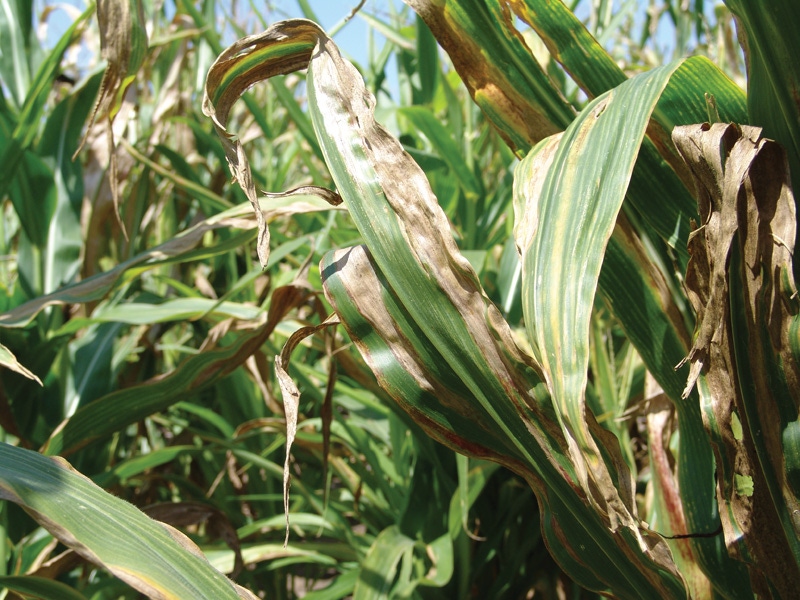July 22, 2013

Goss’s wilt has proven to be much more of a problem this year compared to 2012. Wet weather and instense storms have led to the emergence of this disease in corn as it has continued its movement eastward from the Great Plains.
“This disease can overwinter in the soil and crop debris for a few years, so if growers have had a problem before, it could be an issue again this year,” says Scott Heuchelin, DuPont Pioneer research scientist, plant pathology.
Recently, Goss’s wilt has been on the move from western Nebraska and eastern Colorado to as far north as Canada and as far east as Indiana. The disease varies in the amount of damange it can do to a crop from minor problems to yield losses as significant as 50 percent.
Several conditions must be present for Goss’s wilt to produce significant damage. If the bacterium is already present in the field and a susceptible hybrid is planted, the next main contributing factor is severe weather. Wind, sandblasting and hail create wounds for the bacteria to enter. Wet weather and high humidity are also needed for disease development.
Symptoms and scouting
“Because this infection can appear in two phases, early and midseason, it’s important to scout for Goss’s wilt throughout the season to see if your fields suffer from the disease and to manage against it over the long-term,” Heuchelin reports. “This disease can also look like normal environmental stresses such as sun scald and drought stress, which makes scouting for it even more vital.”
While the systemic wilt phase is less common than the foliar phase, scout early for Goss’s wilt. Early season infections can result in discolored vascular tissue within the stalk. Those cases show a buildup of bacteria in the vascular bundles that inhibits the plant’s ability to transfer water. Stunted growth and wilting as if drought stressed is another symptom to watch for.
Midseason signs and symptoms include distinct dark green to black “freckles” within or just outside of leaf lesions. Shiny or glistening patches of dried bacterial ooze on the lesions, similar to a thin layer of varnish, can also be observed. Other signs of infection are water-soaked streaks accompanied by tan-to-gray lesions that run lengthwise on the leaves.
Like what you’re reading? Subscribe to Farm Industry News Now e-newsletterto get the latest news and more straight to your inbox twice weekly.
Management options
Since fungicide application will not work on Goss’s wilt, the best strategy is prevention in the off-season and selecting a hybrid with resistant genes.
Crop rotation and tillage will minimize survival of the bacteria. Corn-on-corn has led to more prevalence of Goss’s wilt in recent years.
Good weed control is also now more important than ever because weeds such as green foxtail, barnyardgrass or shattercane are hosts for this bacterium.
Heuchelin also suggests harvesting and tilling infected fields last and then cleaning your equipment to help avoid spreading the pathogen to uninfected fields.
For more information visit pioneer.com.
Read the original release from DuPont Pioneer here.
You May Also Like




